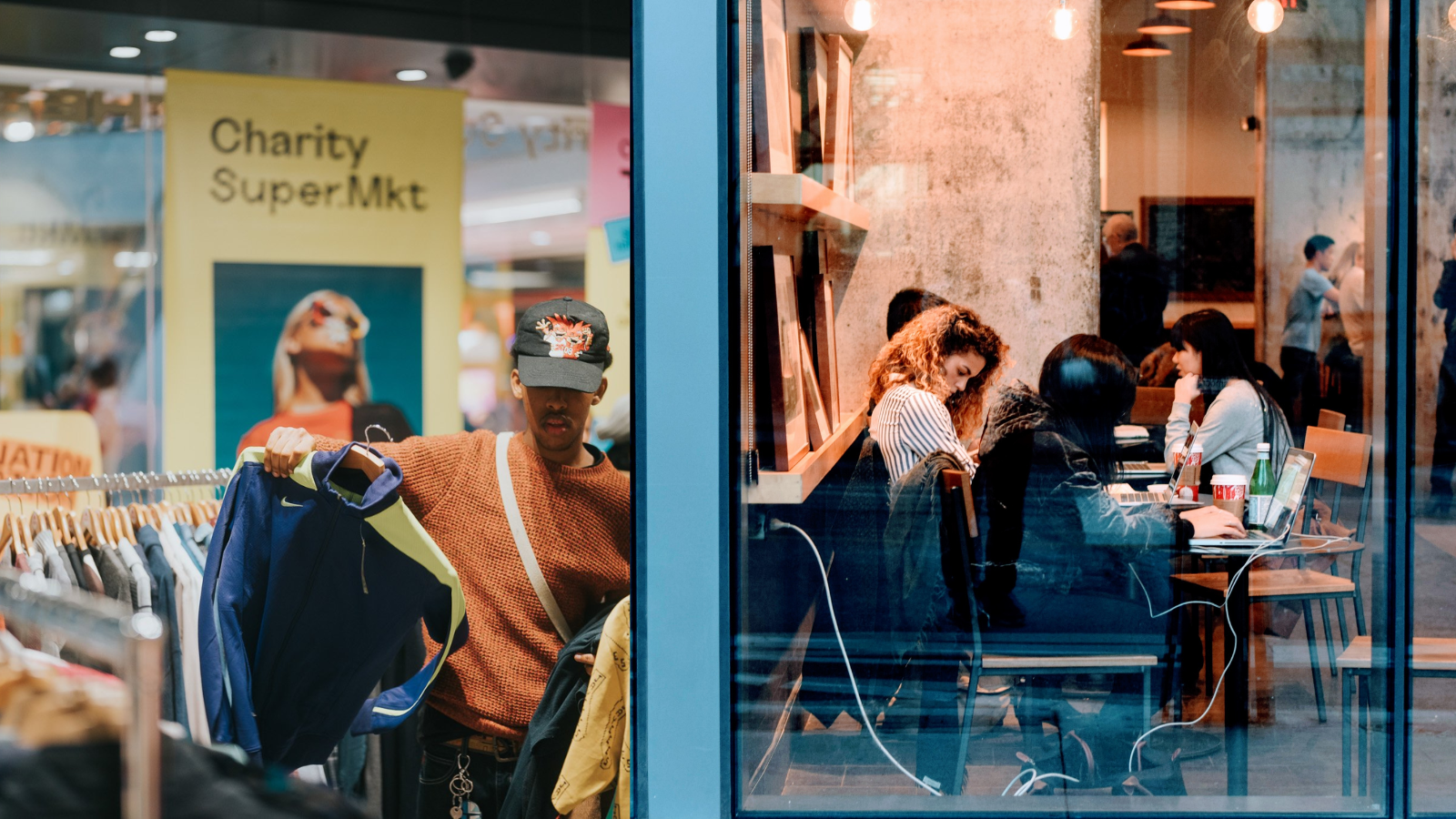Beyond shopping
Reimagining the High Street as a hub for connection and wellbeing

A few months ago, I covered the launch of Holland & Barrett’s new wellness experience store in Cardiff; a standout example of retail reimagined with intention. The space was designed to nourish body and mind, with quiet zones, treatment rooms and a flow that encourages pause as much as purchase. I interviewed the creative agency Syn about their thinking, and it really stayed with me. (You can read it here).
That story sparked something. It made me look again at the high street... not as somewhere to shop, but as somewhere to feel. To connect. To belong.
And I’m not alone in that thinking.
I’m a member of High Street Positives, a brilliant and growing community of people who believe that our town centres matter. The group’s mission is simple but powerful: to amplify the good, spotlight progress, and champion the high street as a place for people, not just products. Retailers, creatives, placemakers and citizens come together here to share stories, push new ideas, and reimagine what’s possible.
It’s where I’ve seen the most thoughtful conversations about connection, purpose, community, and wellbeing in the context of retail. And it’s where the idea behind this piece really came together.
But something is broken
Research from Health Equity North paints a worrying picture. In just a decade, we’ve lost one in five retail units, two in five banks, one in six pharmacies... it's depressing! Many town centres, especially in the North, have seen an influx of fast-food outlets, vape shops and betting stores. These are symptoms of neglect and they hit the most deprived communities hardest.
The consequences are not just economic. As these places of connection disappear, so too do our third spaces, the places that aren’t work or home but matter deeply to our wellbeing. Their loss feeds loneliness, disconnection and despair. It chips away at local identity, pride and mental health.
Reclaiming the High Street through wellbeing
There is hope. And momentum. One of the most powerful ideas coming out of the recent Ghost Towns report is the concept of wellbeing-first regeneration: turning empty units into spaces that serve community health and human connection.
Think wellbeing studios hosting yoga, breathwork, art therapy or peer-led support. Think grief cafés, like those run by The Good Grief Trust, where a cup of tea and honest chat help people feel less alone. Think youth spaces, quiet zones, sensory-friendly corners, or in-store counselling rooms.
And we’re not starting from zero.
In Birmingham, Rosie, founder of Miss Macaroon is using her retail space to train and support young people with barriers to employment, in partnership with Midcounties Co‑operative. Their “All Rise” programme is an incredible model of what happens when inclusive design and skills-building meet the everyday act of buying a treat.
The Morrisons Foundation has rolled out sensory support kits across all its Scottish stores, adding fidget tools, squish mats and other quiet aids to help neurodivergent customers feel more at ease while shopping.
Timpson, long known for their inclusive hiring practices, continue to employ ex-offenders and lead by example in creating a workplace culture that centres care and second chances. Their high street stores are living proof that employment can be rehabilitative and community-rooted.
Then there’s Community Clothing, which uses pop-up shops to keep skilled garment workers in jobs across the UK, making sure that retail supports regional manufacturing and economic dignity.
NEOM Wellbeing is reimagining retail therapy quite literally, with stores that feel like sanctuaries. Soft lighting, essential oils in the air, quiet corners to slow down... it’s wellness, but tangible, right on the high street. (Sign me up right now!)
At the food end, FareShare works with big-name supermarkets to redirect surplus food to local charities, often distributing it through retail spaces or hubs. It’s not just about meals, it’s about dignity, wraparound support and local resilience.
And in a wave of creative revival, Charity Super.Mkt has brought DJs, curated fashion and Gen Z energy into the charity shop sector, proving that second-hand doesn’t mean second-rate. This is culture, community and circular fashion with soul! I love this example.
Even legacy brands like John Lewis are experimenting, hosting Jamie Oliver’s cookery school in their Oxford Street flagship. It’s not just an event space but a new way to connect people through learning, food and shared experience.
Local retail = Real impact
What unites all these examples is the shift from consumption to connection. From "what can I sell you?" to "how can we support you?" That’s the future the high street deserves.
To truly regenerate our town centres, we need to see them not as problems to fix, but as platforms to reimagine. As spaces where wellbeing, community, and commerce can all coexist.
The good news? It’s already happening. Now, it’s about turning green shoots into a forest.
If you’re part of the movement... retailer, designer, policymaker, community builder... please, let’s keep telling these stories. Let’s keep showing what’s possible.
Because when the high street thrives, we all thrive.
